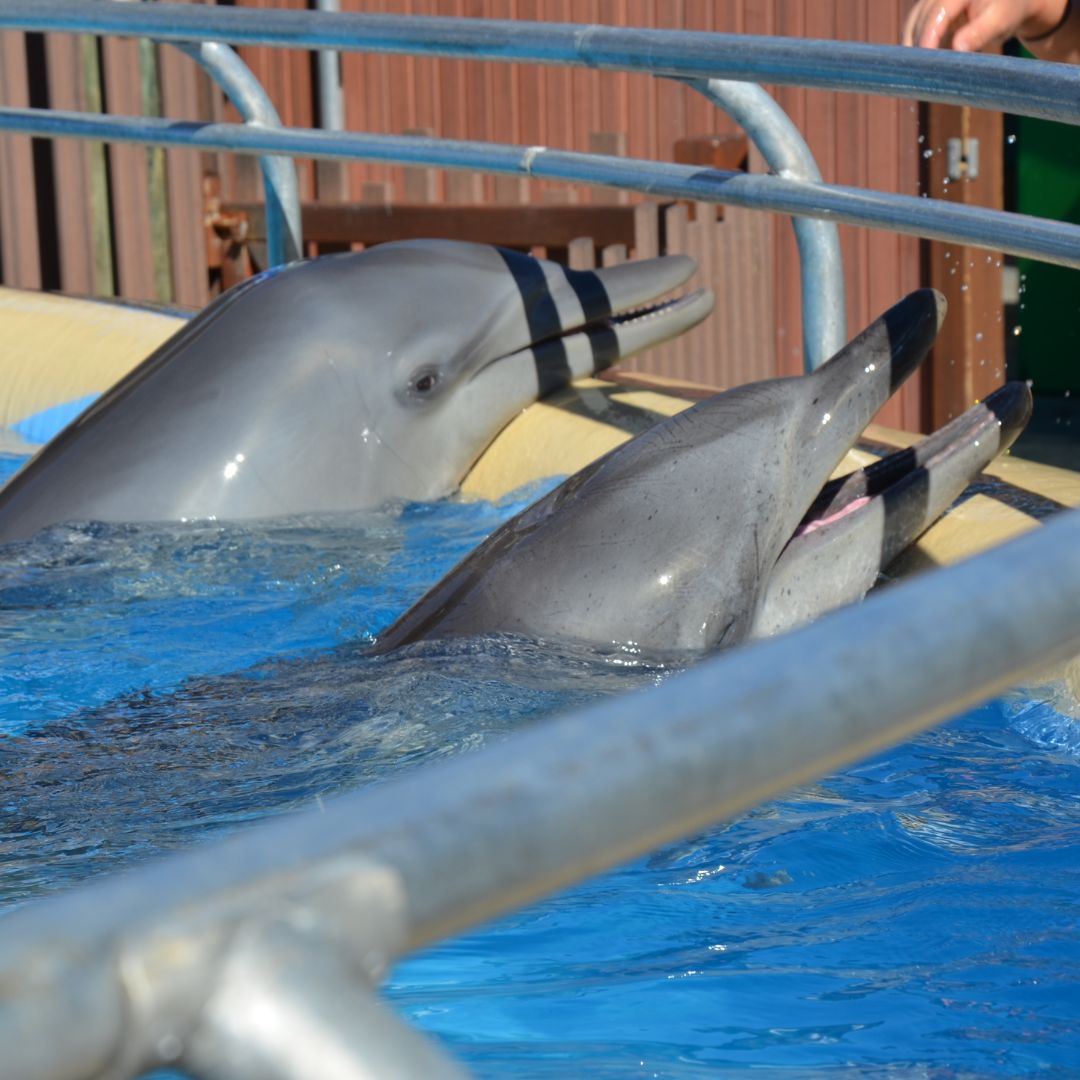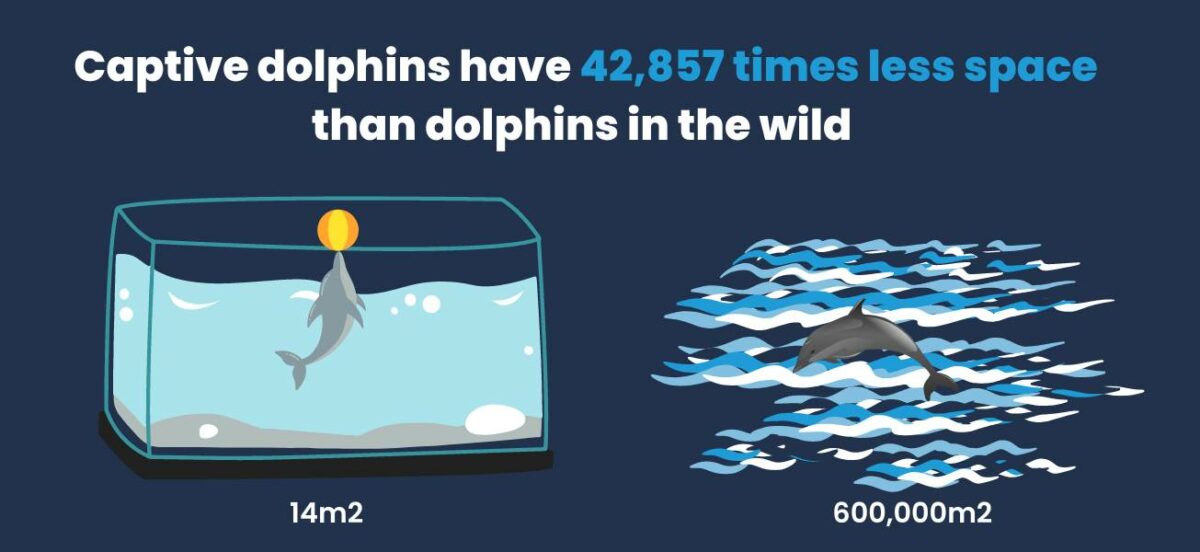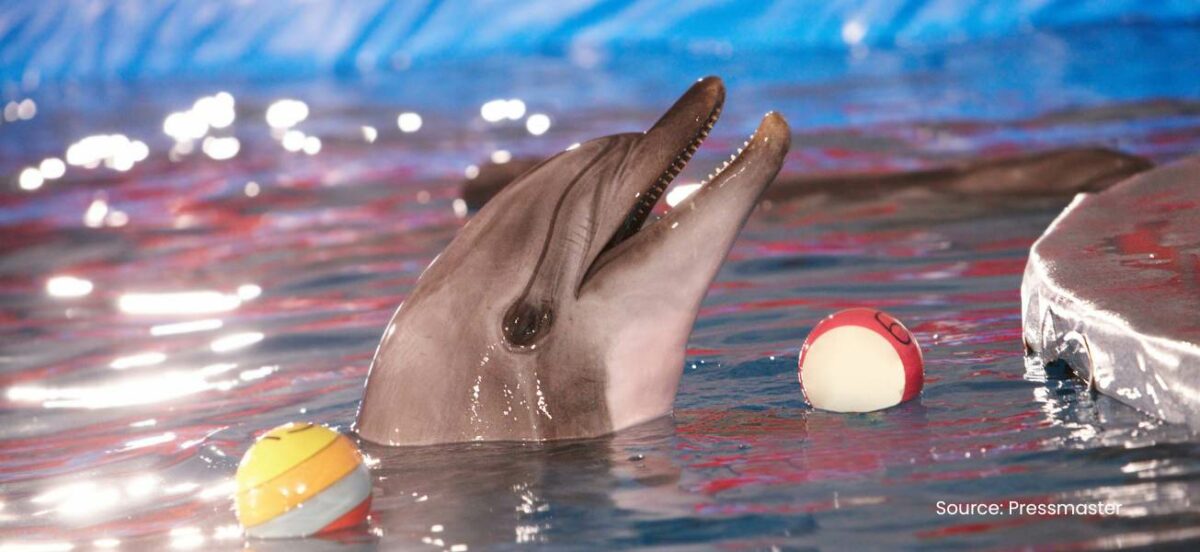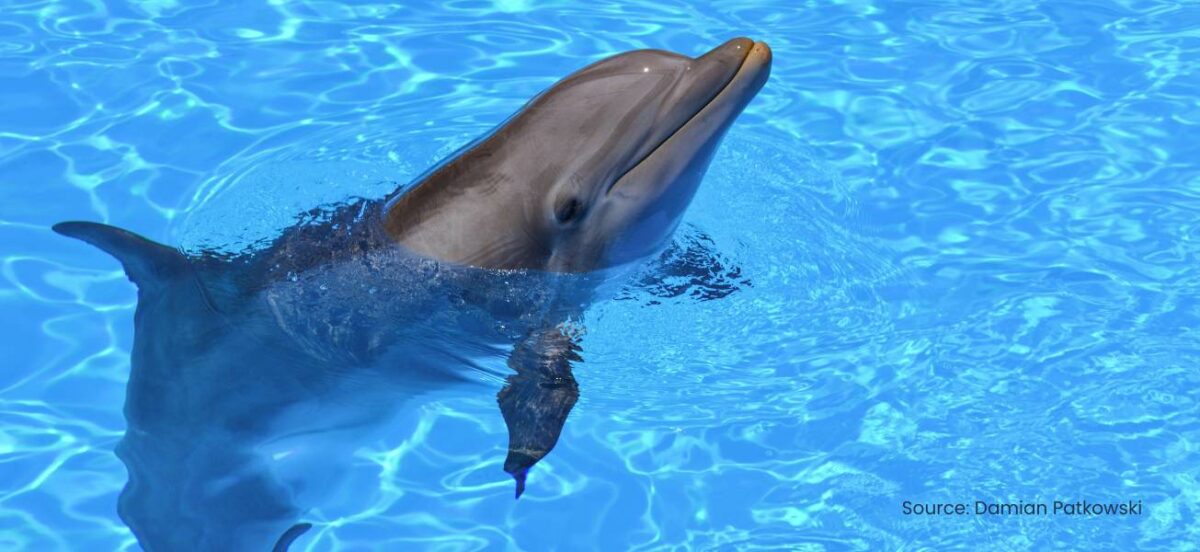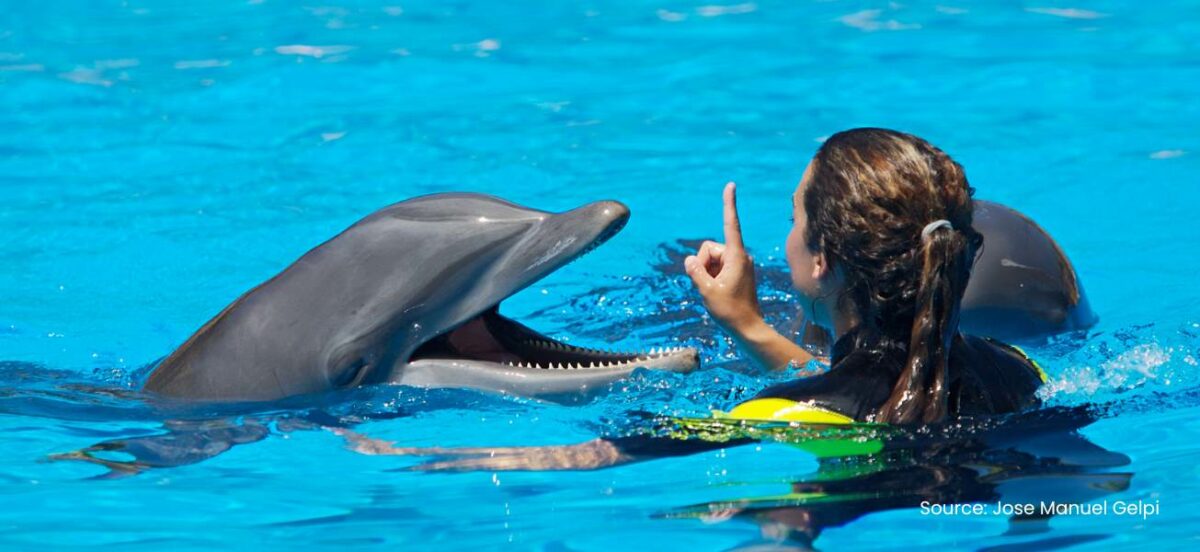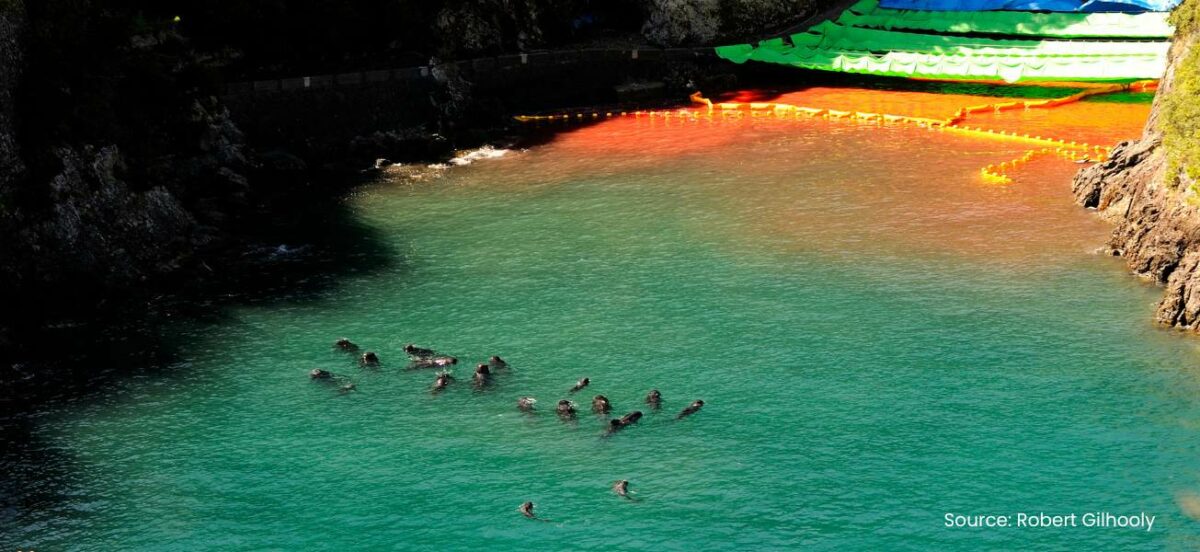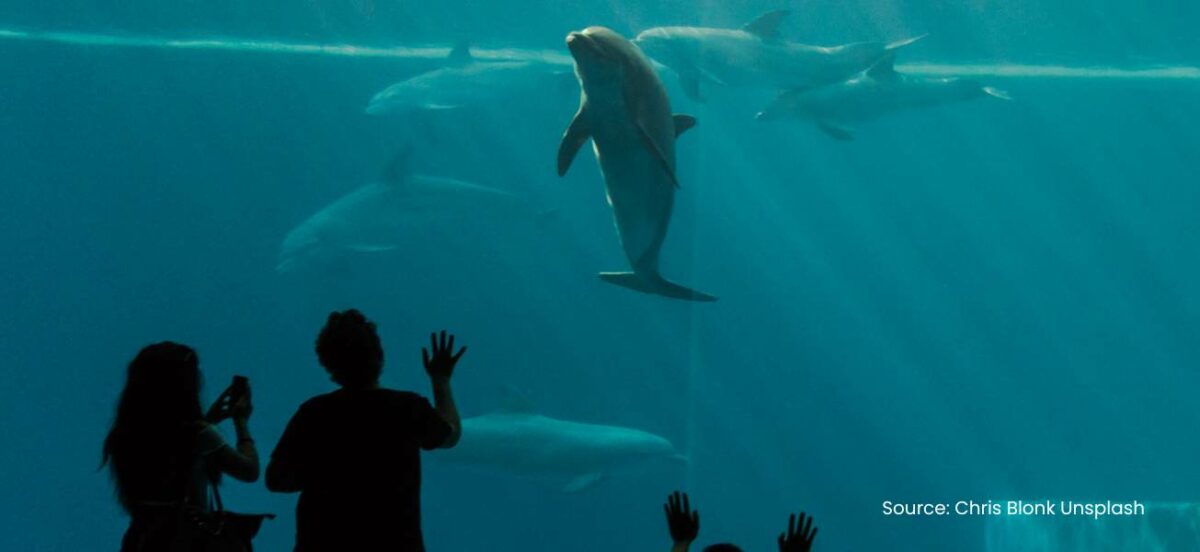Through our relentless efforts, we’ve successfully outlawed the breeding of dolphins in captivity in New South Wales. This means that Zippy, Bella and Jet – the dolphins currently residing in the Coffs Coast Wildlife Sanctuary – will be the last generation to live in captivity. This gives us hope for a world where other states also outlaw dolphin captivity to break the cycle of cruelty forever.
The power of your pledge
With your pledge, you’re recognising dolphins as intelligent, sociable beings who have a right to roam vast oceans.
You’re sending an important message to the dolphin entertainment industry: profiting from these sentient beings is unacceptable.
Top 6 reasons not to visit dolphins in marine parks
Imagine living your entire life in your living room, the vast world outside becoming an alien concept. For dolphins in marine parks, this is their harsh reality. Confined within the limited dimensions of an artificial enclosure, these sentient creatures endure a daily assault of bright lights and booming noises, while their instinctive urge to explore and socialize is constantly thwarted.
Dolphins don’t have enough space
Dolphins are accustomed to swimming long distances, diving deep, and exploring diverse marine landscapes. Marine parks, constrained by physical and financial limits, offer only a fraction of this space, usually in the form of small, shallow pools. This lack of space restricts dolphins’ natural behaviours like hunting, socialising, and exploring. Captive dolphins have to swim their enclosures ~500 times per day to match the distance that wild dolphins swim.[1]
Dolphins suffer health issues
Dolphins in captivity frequently suffer from dental problems due to grinding their teeth against tank surfaces, a sign of distress caused by boredom and frustration.[2] Additionally, the unnatural tank environments and feeding practices expose them to excessive ultraviolet light, leading to eye issues like lesions, infections, and early cataracts.[3]
Dolphins in marine parks experience stress
Studies have shown that these magnificent creatures often have higher levels of stress hormones compared to their wild and free counterparts in the ocean.[4] This can lead to them not wanting to eat, suffering from painful stomach ulcers, and even having trouble getting along with other dolphins.[5]
Captivity changes dolphins’ natural behaviours
In marine parks, dolphins are usually trained using ‘operant conditioning’ where food is use as a primary reinforcer to perform. Performances often involve dolphins exhibiting learned circus-like tricks and does little to educate people about dolphins’ natural behaviours. Captivity also alters crucial natural behaviours and social interactions such as mating, maternal care, and social relationships. This has resulted in abnormal and sometimes violent behaviours by captive dolphins due to restricted space and unnatural social group compositions.[6]
Marine parks prop up the dolphin hunting industry
The sale of wild dolphins to marine parks is the key reason many dolphin hunts continue. For example, CITES shows that in the last 10 years, facilities in China, Russia, Thailand, Vietnam and Korea have bought wild dolphins from Japan. The process is traumatic and harmful to the wild dolphins who are trapped into a life of captivity.
Marine parks exist to entertain, not for conservation
Many marine parks present themselves as conservation centres, yet they make minimal to no efforts towards protecting wild dolphins or rehabilitating and releasing those in their care. Furthermore, many dolphins in captivity are bottlenose dolphins, who are not an endangered species. Instead, venues are known to breed dolphins to perpetuate the marine park industry.[7]
Success is possible: ending dolphin captivity in New South Wales
